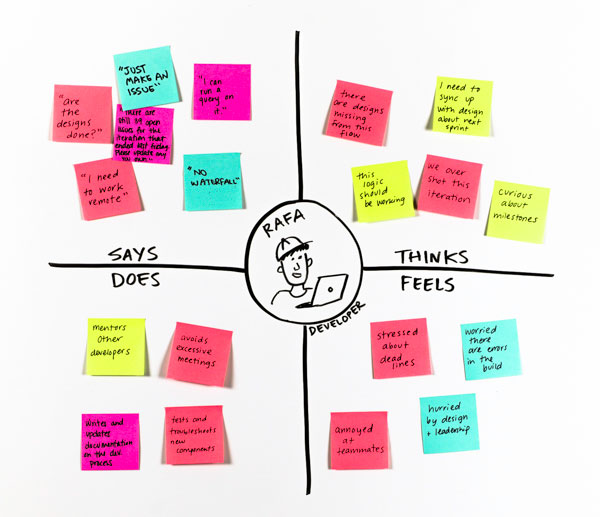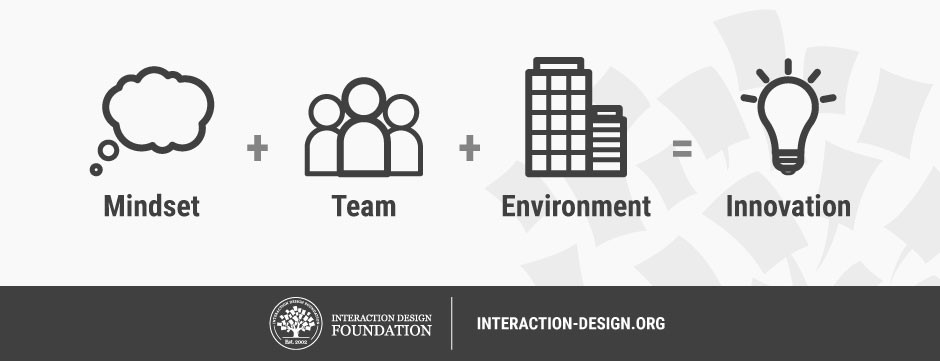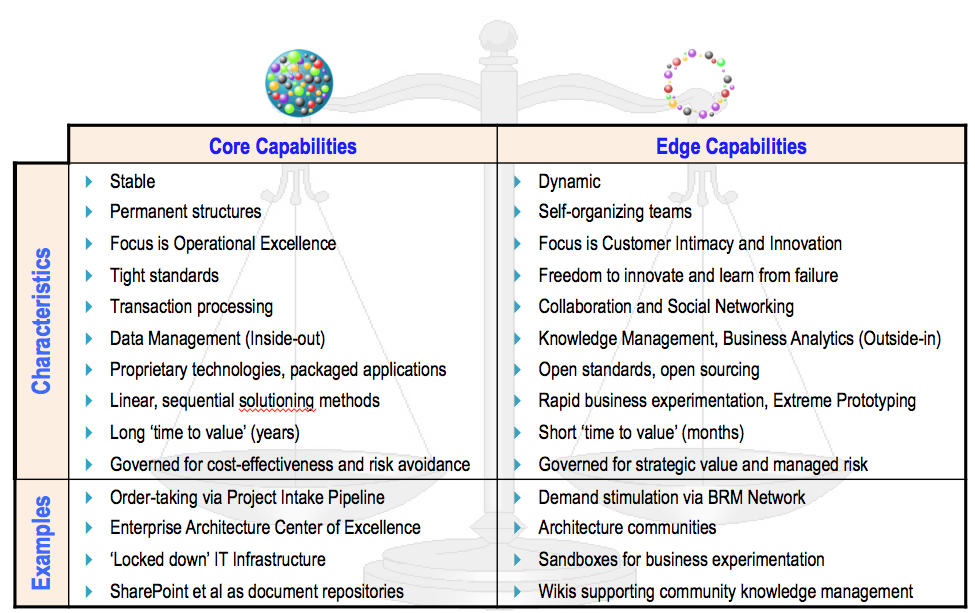How Business Relationship Managers innovate? – looking for ways to explore new possibilities!!
In Part1 of this article we saw how approaching challenges from a human centred perspective can yield some of the richest opportunities for change and that every Innovation program has three factors built into it– Technical, Business and People.
In the second part of this series we will dwell into what value Business Relationship Manager brings in to Innovate through design thinking and deliver business value in the digitally disruptive world.
How Can BRM Use Design Thinking to Increase Performance?
Jeff Warren, a great proponent of Design Thinking and Business Relationship Management says, Empathy, Creativity, and Accomplishment are three components to consider for Business Relationship Manager to create positive impressions.
Empathy Maps
Business Relationship Managers (BRMs) with the help of empathy maps, and affinity diagrams can step in and understand what are the user needs, and wants and how they behave, feel or think when interacting with products are services in real world settings. This human centred approach can help define a problem statement. A good Problem statement guide your team and provides focus on the specific needs that you uncovered during your empathy stage.
Learning to stand in somebody else’s shoes, to see through their eyes, that’s how peace begins. And it’s up to you to make that happen. Empathy is a quality of character that can change the world. – Barack Obama

Empathy Map – Photo credit- IBM
Creativity
Design-led companies such as Apple, Google, Amazon, Pepsi, Procter & Gamble and SAP have outperformed the S&P 500 by an extraordinary 211%. These companies understood, if executed properly and strategically, design thinking can impact business outcomes and result in real competitive advantages.
 Photo Credit: Interaction Design Org
Photo Credit: Interaction Design Org
The notion that creativity or “artistic” talent is only the domain of those gifted with these abilities is one of the most inhibiting factors in our lives today. However, it is becoming a more widely held belief that creativity and lateral thinking can be learnt, and with the implementation of the appropriate steps, process and mindset, can be unleashed to solve some of the “wickedest” problems we find ourselves faced with.
Business Relationship Managers should act as act as Transition advisor to Business partners. With Creative problem solving they should Inspire new thinking to discover opportunities for innovation that furthers business goals.
Accomplishment
Joe Topinka – CIO, BRM Board Chair, & Author of the Ground Breaking Book, IT Business Partners suggests that the hall mark of converged organization is that they Think, Act and Achieve together. As a lead Business Relationship Managers sees to that, right from the beginning IT( and other Providers) earns a seat at the table and ensure strategy is converged & intertwined, that the processes ensure linkage between IT & Strategy, and financial results are better.
Cultivating Business Innovation
Business Innovation can take various forms—innovation in a company’s products or services, innovation in a company’s processes or Operating Model, or even innovation in a company’s Business Model. However, most organizations are optimized to perpetuate the status quo, not to innovate. In situations such as these, the BRMs should be well-positioned to be a catalyst for any type of innovation.
Exploration vs Exploitation
Many companies tend to get stuck around their Core Capabilities, and as a result can become less innovative and increasingly conservative, tactical, and incremental over time. To overcome this tendency, BRMs must counterbalance the focus on Core Capabilities by bringing focus and attention to Edge Capabilities.
Value creation can be pursued through either Analytical or Intuitive approaches.
 Photo Credit: BRM Institute
Photo Credit: BRM Institute
Analytical Approach
Analytical organizations are built to optimize status quo. They have a Reliability Bias, meaning that they seek consistent, predictable outcomes. As such, they are optimized for the exploitation of business opportunities via Core Capabilities.
Some senior business executives—such as those in finance, operations, and security—tend to be ‘left-brain’ dominant, favouring rigorous processes and spreadsheets.
Intuitive Approach
Intuitive organizations are built to create new products, services, or capabilities, not to sustain and grow a current product, service, or business model. As such, they have a Validity Bias, meaning that they seek outcomes that meet a desired objective. Rather than being optimized for exploitation, they pursue exploration via Edge capabilities. Strategic BRMs should be comfortable with this Intuitive perspective, looking for ways to explore new possibilities.
“Always design a thing by considering it in its next largest context: a chair in a room, a room in a house, a house in an environment, an environment in a city plan.” – by Eero Saarinen, the Finnish-American architect
Innovation Implications for the Business Relationship Manager:
This Design Thinking Workshop is designed to help BRMs and organizations evolve and meet the promise of the role to become an agent of change in their company or organization, positively impacting business strategies, plans, and results.
- Bringing new thinking and ideas to business partners using Design Thinking
- Identifying ways to decisively affect the bottom line, including cost savings, cost avoidance, and investment leveraging
- Learning how to incorporate three key ingredients – empathy, creativity, and accomplishment – to make BRM an indispensable resource for business partners
- Identifying opportunities that challenge the status quo, inspire new growth, and create competitive advantage for your company
- Empowering business leaders with knowledge of technology trends to help them make more informed decisions on future goals
- Establishing strong, collaborative relationships with IT (or other service provider organizations)
- Leverages BRM as an Orchestrator and Connector
- Engages the BRM in strategy formulation
- Provides an opportunity to influence downstream activities
Conclusion
BRMs are seen a change agent by way of creative problem solving they can Introduce a new way of thinking to address strategic needs or solve existing problems, inspire creativity and Improve collaboration with business partners. BRMs should be well-positioned to be a catalyst for any type of innovation and they must counterbalance the focus on Core Capabilities by bringing focus and attention to Edge Capabilities.





